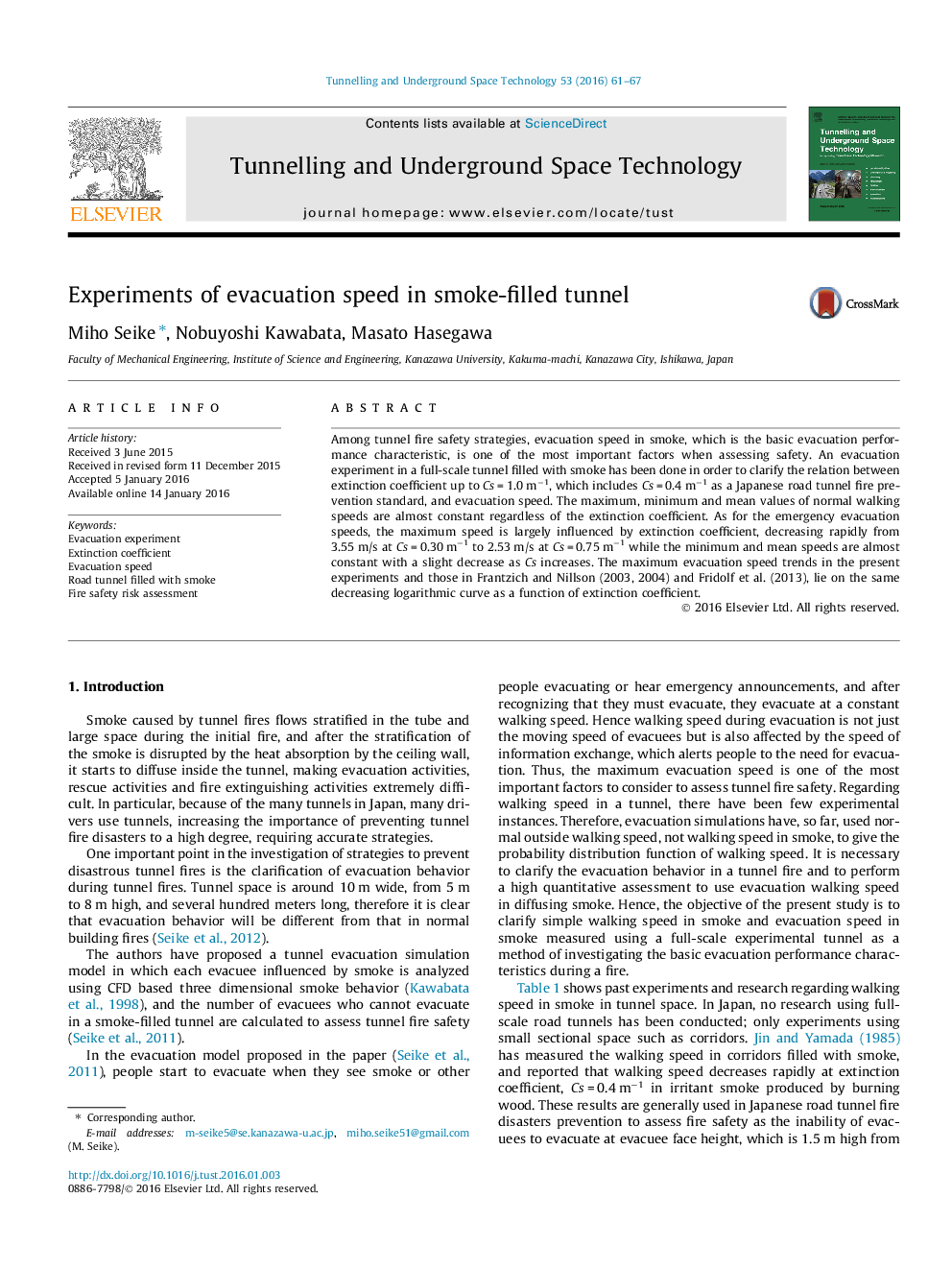| Article ID | Journal | Published Year | Pages | File Type |
|---|---|---|---|---|
| 310615 | Tunnelling and Underground Space Technology | 2016 | 7 Pages |
•We measured normal walking and evacuation speeds in a smoke-filled full-scale tunnel.•Normal walking speeds are almost constant regardless of the smoke density.•The minimum and mean emergency evacuation speeds are almost constant.•The maximum emergency evacuation speed decreases rapidly as smoke density increases.•The maximum speeds lie on the same logarithmic curve as those in other papers.
Among tunnel fire safety strategies, evacuation speed in smoke, which is the basic evacuation performance characteristic, is one of the most important factors when assessing safety. An evacuation experiment in a full-scale tunnel filled with smoke has been done in order to clarify the relation between extinction coefficient up to Cs = 1.0 m−1, which includes Cs = 0.4 m−1 as a Japanese road tunnel fire prevention standard, and evacuation speed. The maximum, minimum and mean values of normal walking speeds are almost constant regardless of the extinction coefficient. As for the emergency evacuation speeds, the maximum speed is largely influenced by extinction coefficient, decreasing rapidly from 3.55 m/s at Cs = 0.30 m−1 to 2.53 m/s at Cs = 0.75 m−1 while the minimum and mean speeds are almost constant with a slight decrease as Cs increases. The maximum evacuation speed trends in the present experiments and those in Frantzich and Nillson (2003, 2004) and Fridolf et al. (2013), lie on the same decreasing logarithmic curve as a function of extinction coefficient.
